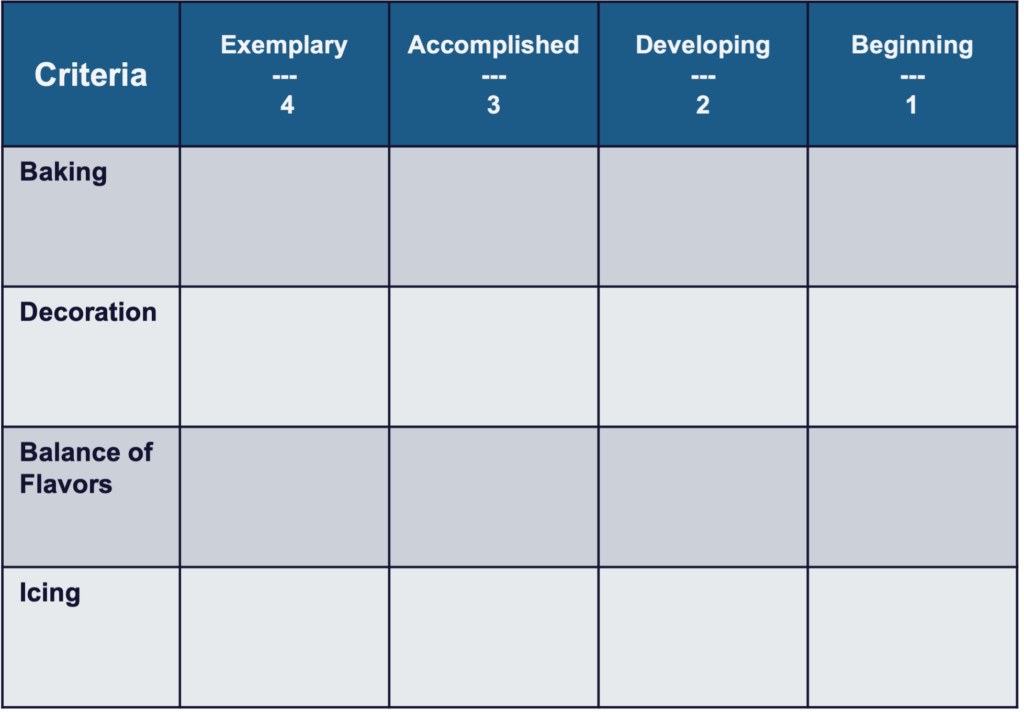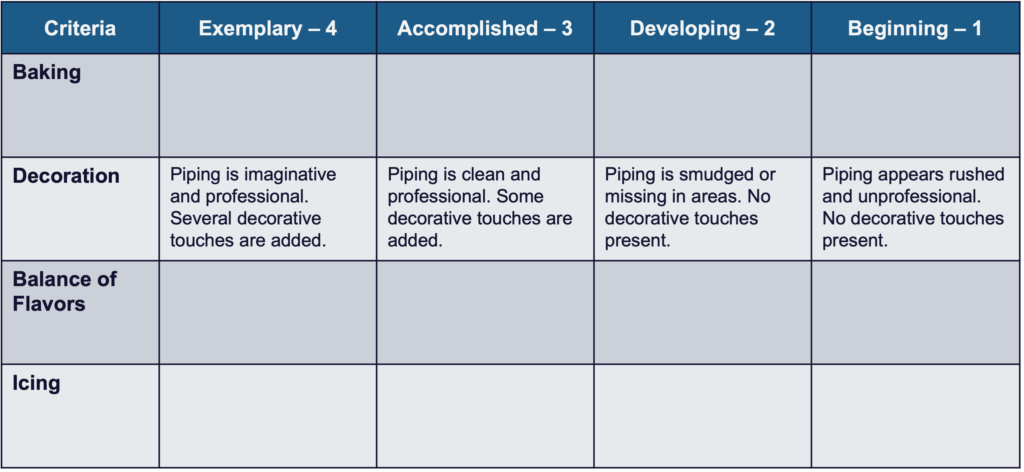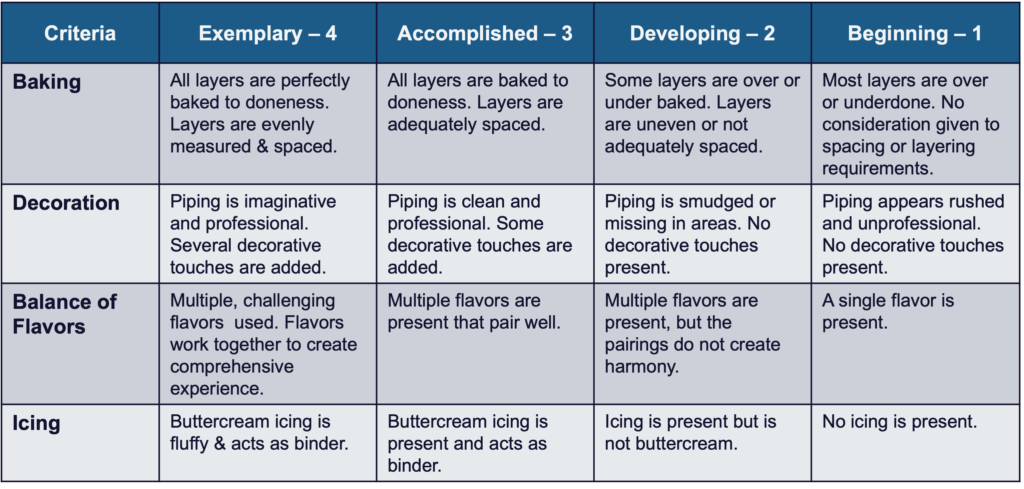Before developing your rubric, consider the assessment you are creating the rubric for. Ask yourself:
- Is my assessment developed completely?
- What are the course and module objectives aligned with the assessment?
- What will student work look like?
The answers to these questions will help guide the development of your rubric components. As you build, regularly return to these questions and answers to help guide you. Already built a rubric and looking to improve? Check out our Tips & Tricks for Creating Rubrics.
There are three important components contained within each rubric: criteria, level of performance, and descriptors. Each component will take dedicated time to consider and develop. After identifying the assessment you want to develop a rubric for, dig into each area of rubric development below:
Criteria identify a trait, feature, or dimension that will be measured. Most rubrics contain multiple criteria with clear definitions to clarify the meaning of the trait being assessed. For example, a term paper rubric might contain multiple criteria analyzing the introduction, thesis, analysis, grammar and punctuation, citations, and references.
To begin identifying criteria, start a list of the knowledge and skills you need to assess. Focus closely on the objectives that are aligned to the assignment. You might find that there are quite a few criteria you want to consider, but your objectives can help to narrow that list.
Once a list of criteria is identified, group the knowledge and skills according to similarities. For example, if you are assessing a research paper you might want to consider spelling, punctuation, grammar, and sentence structure. These criteria could be grouped together under a catch-all category like “Grammar and Mechanics.”
You’ll want to keep the number of criteria manageable. We recommend around 4-7 criteria total.
Example
In this example, students are asked to bake a 3-layer cake with two complementary flavors for an adult’s birthday party. In order to assess their cake, a list of criteria is created:
From there, the long list of criteria is compared to the objectives aligned to the assessment. Extraneous criteria are removed and criteria are grouped:

Levels of performance are the degree to which a student has met a criteria. These levels tell your students what they are expected to do within each criteria in order to reach a certain level of performance. Most often, these levels are labeled as adjectives like superior, moderate, poor, or above or below average. Some faculty prefer to rate levels of performance numerically (1, 2, 3…) or by letter grade (A, B, C, D).
Levels of performance can be different for each criteria. For example, a more complicated criteria may have 4-5 levels of performance, but a more basic criteria may be as simple as met/not met.
Example
When developing levels of performance for our cake baking assessment, we need to consider the type and impact of the assessment on students overall course performance. Because this assessment is formative in nature, it will not carry a large point value and will have minimal impact on the students overall grade.
We also need to consider whether or not each criteria requires a different level of performance. In this case, each criteria can be easily divided into four levels based on our expectations of student performance. We’ll list the highest performing level to the left of the criteria so that students reviewing the rubric will read the highest level of expectation first.

Descriptors are the explicit description of performance found at the intersection of each criteria and level of performance. These explain in great detail to students what is expected at each level of performance for each criterion. Descriptors are the most time consuming but also the most valuable element of a rubric for both improved grading and for improved communication of expectations. You may also feel that overtime, your descriptors must change and evolve as you utilize the rubric.
Example
In order to help avoid vague or subjective narratives in your descriptors, write and rewrite the statements to be easily measurable and specific. You might find that it is easier to write one, clear and concise statement of expectations and begin with your most exemplary category. From there, work your way down the levels of achievement and subtract specific performance expectations.

As you write descriptors, review and revise your defined criteria and levels of performance to ensure accuracy before using it to assess student work. Check for clarity, conciseness, and measurability.

In the “Exemplary” level of performance descriptor, note that layers should be evenly measured and spaced. In order to increase measurability for my students, I want to revise to be more specific. Instead of mentioning layers in a general sense, revisions for measurability could include east three, 1” layers present with .5” of buttercream present between each layer. The more specific the rubric is for you and for your students, the more useful my rubric becomes as an assessment tool.
Rubrics are a powerful too as they can be used to motivate students to assess their own work, used as a personal goal setting guide, and used as a revision and feedback tool. Rubrics are flexible and can be implemented during self-review, peer-review, drafting, and goal setting assignments in your course.
After developing your rubric, utilize the power of your Learning Management System to connect your rubric to your online assessments and speed up your grading process:

